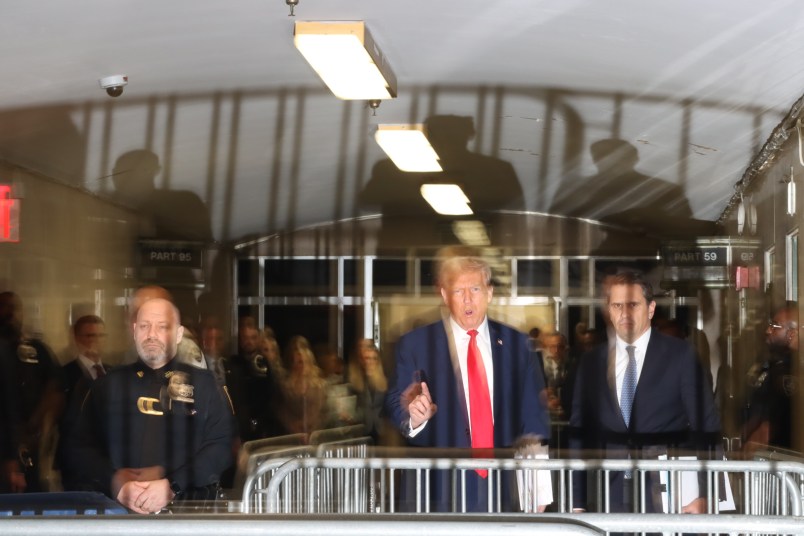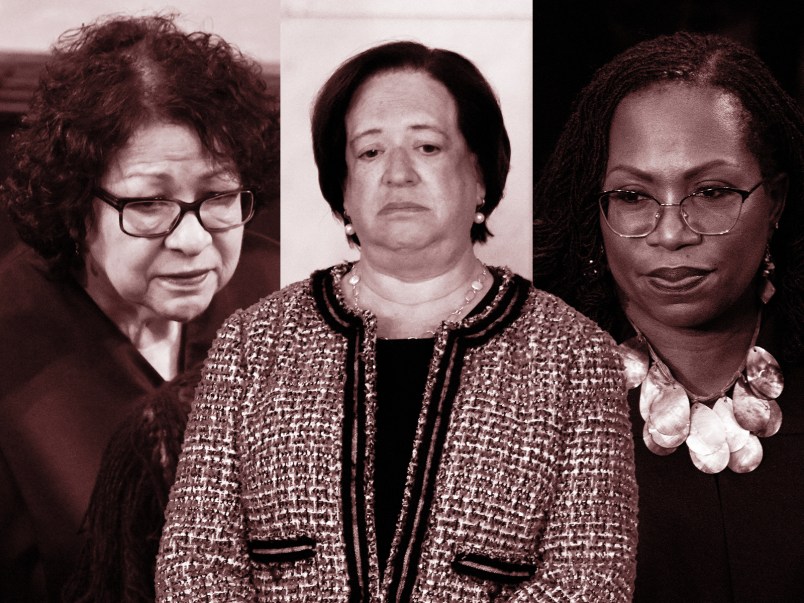It’s been more than a year and a half since Election Day 2020, but the lies that propelled Donald Trump’s effort to steal a second term in office aren’t going anywhere. If anything, the rabbit holes cultivated by right-wing operatives are only growing deeper and darker.
With them has come a new vocabulary, including longstanding terms related to governance and election administration that are being used incorrectly, and other terms that have been more or less invented to serve election truthers’ ends. To help shed some light on the Big Lie as it currently stands, here’s a glossary of some key terms in the election conspiracy theory universe.
ballot trafficking and/or ballot harvesting
A reference to the simple practice of helping someone else, or multiple people, turn in absentee or mail-in ballots. Over time, this practice has been labeled “harvesting” or “trafficking” by some right-wing operatives in an effort to make the assistance seem sinister, though examples of actual wrongdoing are extremely rare.
State laws on ballot collection vary widely, though in most states, it’s not illegal to drop off an absentee ballot on behalf of someone else.
In the wake of “harvesting” or “trafficking” allegations from 2020, Republicans in several states have pursued efforts to crack down on ballot collection practices– often to the detriment of disabled or otherwise home-bound voters who benefit from the assistance.
color revolution
According to the traditional definition, “color revolution” refers to instances of anti-government protests, initially in post-Soviet states but now more broadly, named for various colors, such as the 2004 Orange Revolution in Ukraine. The term has been coopted to refer to the supposed influence of Western governments or other foreign actors on these protest movements — such as when Vladimir Putin referred to a “color revolution” as a “well-tested scheme for destabilizing society.”
It is in that context that the term has been used in the United States post-2020: election truthers insisting that 2020’s election was stolen by leftist agitators who received nebulous, foreign help.
Conspiracy theorist Phil Waldron, for example, referred to the purported presence of Antifa agitators at one Big Lie event as “part of the color revolution.” One December 2020 memo circulated among Trump adherents referred to supposed evidence “suggesting foreign involvement in both the violent ‘Color Revolution’ the U.S. is presently undergoing and specifically the 2020 Election fraud and their involvement in altering the vote counts in the 2020 Election.”
forensic audit
Election officials have for years audited election results to ensure the accuracy of vote-counting equipment and to sniff out any mistakes or irregularities. But the term audit doesn’t go far enough to serve conspiracy theorists, who need to evoke cloak-and-dagger mysteries in order to justify the impossible ends they propose to uncover the truth. Thus, the “forensic” audit: The added “forensic” doesn’t denote anything in particular, aside from perhaps implying that election truthers have unfettered access to secure voting machines that are, typically, restricted to election officials for security reasons.
The vagueness of the term is by design: Run-of-the-mill audits that threaten to not produce desired results, or that have concluded without any fireworks, are often deemed not truly “forensic.” In other words: The forensic audit cannot fail, it can only be failed.
ERIC
The Electronic Registration Information Center has for years been a popular and well-regarded multi-state effort to synchronize voter rolls nationwide, despite election administration being the domain of state and local governments. Each of ERIC’s 31 states (and Washington, D.C.) submits voter data and other state-level information to ERIC’s technical staff, who then work to prevent fraud and double-voting, and also to flag unregistered eligible voters. ERIC is funded and governed by its members: Each stevoluate’s top election official picks a representative for the organization.
Recently, ERIC has come under right-wing attack, starting with the conspiracy site Gateway Pundit — which called ERIC “a left-wing voter registration drive disguised as voter roll clean up” and attempted to tie it to George Soros. The state of Louisiana announced its withdrawal from the organization after that article, offering explanations that didn’t really make sense.
The irony, as NPR noted, is that voter fraud crusaders are now campaigning against an effective anti-fraud tool. Michael Gableman, the partisan investigator of Wisconsin’s 2020 elections, has called for the state’s exit from ERIC (a frequent target of Gableman’s, Wisconsin Elections Commission Administrator Meagan Wolfe, currently chairs the body), as has an Alabama secretary of state candidate.
Hammer and Scorecard
A popular post-2020 conspiracy theory asserting that a supposedly top-secret supercomputer, “Hammer,” manipulated the election results on a grand scale with the help of a computer program called “Scorecard.” It was popularized by the longtime griftopia resident Dennis Montgomery, who has hustled everyone from MyPillow CEO Mike Lindell to the federal government, the latter of which he promised a technology that would unearth the secret terrorist messages hidden in Al Jazeera broadcasts.
kinematic artifact detection
Another purportedly “secret” (read: non-existent, widely–mocked) supposed “technology” popularized by Jovan Hutton Pulitzer, an inventor and treasure-hunter of ill-repute even within the election theft conspiracy theory universe. Pulitzer promised that “kinematic artifact detection” could effectively isolate fake, fraudulent, or otherwise tampered-with ballots based on the style of bubble-filling used on the ballots, as well as signs of wear-like folds. Pulitzer studiously avoided publishing any evidence to support the efficacy of his supposed technology.
Pulitzer and his kinematic artifact detection claims were cited by the “audit” of Maricopa County, Arizona’s 2020 election results — a characteristic move by the conspiracy-theory-oriented effort — as well as a widely noted lawsuit in Georgia.
packet captures (PCAPs)
Snapshots of internet traffic in the form of code. Mike Lindell declared last year that PCAPs in his possession would demonstrate Chinese meddling in the 2020 election. That evidence… never saw the light of day.
red mirage
A legitimate phenomena that many conspiracy theorists used as the basis of post-2020 assertions, this term described a simple truth about voting patterns in that election: Democrats were more likely to vote by mail in 2020, given Donald Trump’s months-long pre-election vilification of the practice. Because mail-in ballots are often tallied on or after Election Day (sometimes as a result of state law), some initial Election Day vote tallies showed a Republican advantage that, after several days of counting, disappeared — the so-called “mirage” in question.
The term was popularized by the group Hawkfish, which warned against its misuse by Donald Trump and his supporters — a fear that was quickly realized.
Sharpiegate
A reference to Trump campaign assertions in Arizona in 2020 that voters were purposefully disenfranchised en masse by the provision of Sharpie markers by poll workers, which some right-wing groups asserted would bleed through ballots. In the world of the conspiracy theory, Trump voters were targeted and given the supposedly ineffectual markers so that their votes wouldn’t count. In reality, ballots that can’t be read by vote tabulator machines are simply duplicated by election officials and re-counted.
vote dump
The allegation that bundles of ballots or electronic tallies of votes, implied to be fake or otherwise fraudulent, are added to election tallies in favor of a specific side at key moments. Donald Trump has frequently used the term to refer to the simple counting of ballots or straightforward errors that were later corrected. Post-election recounts and audits across the country have not found any evidence of vote count manipulation in support of the assertions.
vote flipping/deleting/injecting
Similar to “vote dumping,” this refers to the supposed ability of voting machines — such as those from the widely vilified Dominion Voting Systems — to add, subtract, or “fractionalize” votes for or against a specific candidate. Perhaps the most notable use of this assertion was by then-Trump campaign lawyer Sidney Powell in a November 2020 press conference at the Republican National Committee, when Powell asserted that Dominion voting machines “flipped,” “trashed,” and “injected” votes that did not represent the real will of any voters.
Powell is now one of several Big Lie proponents being sued by Dominion for alleged defamation.
watermarks
The foundation of a popular, positively byzantine 2020-era conspiracy theory asserting that widespread voter fraud would be exposed through unseen markings separating real ballots from fake ones. Though ballots don’t use watermarks — election officials have better, cheaper, more efficient ways of affirming ballot legitimacy — Republican lawmakers in several states have pursued adding additional ballot security requirements along these lines since 2020.
Zuckerbucks
2020 grants from Facebook founder Mark Zuckerberg and his wife Priscilla Chan made to help underfunded election administrators supplement their budgets for conducting a costly pandemic election. The funds spurred allegations that the money was distributed with the intent to promote the turnout of voters in more Democratic-leaning areas.
Several states have now pursued legislation to outlaw election officials accepting monetary or other forms of assistance from outside organizations. Gableman, the partisan Wisconsin investigator, has likened the money to bribery — though several courts have affirmed the legality of the grants for the 2020 elections.










